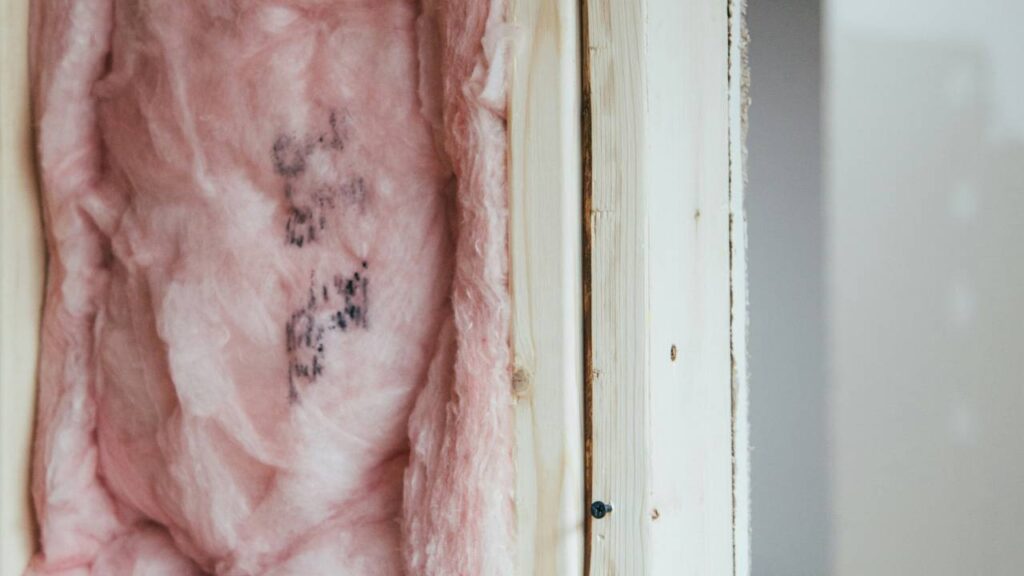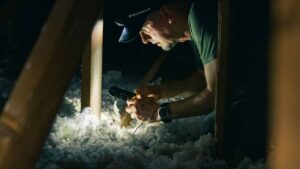When it comes to improving the energy efficiency of your home, choosing the right type of cavity wall insulation can make a big difference. Cavity wall insulation beads often provide better coverage and improved thermal performance compared to traditional bonds. Beads fill even the tiniest gaps in your walls, effectively reducing heat loss and keeping your home warmer.
On the other hand, cavity wall insulation bonds are known for their durability and long-lasting performance. They work by creating a solid barrier within the wall cavity, which can also help in soundproofing your home. Depending on your specific needs and home structure, one option may suit you better.
Both methods enhance heat retention and can significantly lower your energy bills. By selecting the right type of insulation, you ensure a comfortable living environment while being mindful of energy consumption.
Understanding Cavity Walls and Insulation Basics
Cavity walls and insulation are crucial for maintaining your home’s energy efficiency and comfort. Understanding their components and function helps you make informed decisions about your property.
What Are Cavity Walls?
Cavity walls consist of two layers of brick or concrete block, separated by an air gap. This design is common in homes built after the 1920s. The gap helps to reduce thermal transfer between the interior and exterior of the building.
The outer layer of the wall is usually thicker and more durable to withstand weather conditions. The inner layer provides additional structural support. These walls help in improving thermal mass, which keeps your home at a more consistent temperature.
The Importance of Insulation
Insulation within cavity walls significantly improves a home’s energy efficiency. By filling the air gap with an insulating material, like beads or foam, you reduce the U-value of the wall. A lower U-value means better insulation and less heat loss.
Proper insulation can lead to lower energy bills and a more comfortable indoor environment. It also contributes to reducing carbon emissions. Make sure the insulation material is moisture-resistant to prevent damp issues.
Types of Cavity Wall Insulation Materials
Cavity wall insulation materials may include various beads and bonding agents as well as other insulation options that offer unique properties for thermal efficiency. Understanding these options can help you make an informed choice for your home’s insulation needs.
Bead Insulation Options
Polystyrene beads are lightweight and easy to install. These beads are typically injected into the wall cavity, filling the space evenly to provide consistent insulation. Opt for Expanded Polystyrene (EPS) beads if you want a cost-effective and moisture-resistant option.
For improved fire resistance and thermal performance, phenolic foam beads could be a better choice because of their low thermal conductivity.
Bond Insulation Solutions
Bonding agents are used to ensure the insulation material stays in place. Choosing the right bonding agent can affect the insulation’s longevity and effectiveness.
Materials like mineral wool provide good bonding with fire-resistant properties. Polyisocyanurate (PIR) insulation boards can be bonded within cavity walls, offering high thermal resistance.
Comparing Material Properties
When comparing these materials, consider their thermal conductivity, moisture resistance, and fire safety. EPS beads are moisture resistant and affordable, but phenolic foam offers superior thermal performance.
Mineral wool is excellent for fire resistance, while PIR boards offer high thermal resistance. Evaluate these features to choose the right insulation for both budget and performance needs.
Advantages and Limitations of Beads and Bonds
Choosing between cavity wall insulation beads and bonds requires understanding their benefits and limitations. Here’s an in-depth look at the distinct characteristics of each option.
Benefits of Bead Insulation
Bead insulation offers several significant advantages. Firstly, beads are excellent at filling irregular wall cavities completely, ensuring minimal gaps. This results in improved thermal efficiency, reducing your energy bills over time.
Another benefit is that beads are water-resistant. This characteristic helps prevent dampness and moisture build-up within your walls, mitigating potential health risks and preserving the structural integrity of your home.
Bead insulation installation is typically quicker and less disruptive compared to traditional methods. The beads can be injected into the cavity via small drill holes, making the process faster and cleaner for you.
Pros of Bond Insulation
Bond insulation, often known for its adhesive properties, provides reliable and durable insulation. The bond agent helps the insulating material adhere firmly to the wall, preventing it from shifting over time.
This option is particularly effective in enhancing soundproofing. If you live in a noisy neighbourhood or near a busy road, bond insulation can significantly reduce external noise, offering a quieter and more comfortable living environment.
Bond insulation materials are also resistant to pests and insects. The adhesive properties make it difficult for pests to penetrate, providing added protection for your home. Additionally, bonds ensure a consistent layer of insulation, which is crucial for maintaining desired indoor temperatures.
Considerations for Material Selection
When selecting the insulation material, consider factors such as the specific needs of your home and the local climate. Bead insulation is ideal for irregular wall cavities and areas prone to moisture. Its installation is fast, with minimal disruption.
Bond insulation is best if you require added protection against sound and pests. It’s effective in maintaining insulation consistency and longevity, but it might require a more complex installation process.
Evaluate the costs associated with each option. While bead insulation might be cost-effective initially, bond insulation’s long-term benefits could justify a higher upfront expense. Balancing these factors will help you choose the best insulation for your home.
Installation Process and Considerations
When it comes to cavity wall insulation, both bead and bond methods have their own unique installation processes. Each requires preparation and has its own considerations to ensure optimal performance.
Preparing for Bead Insulation
Preparing for bead insulation involves a few essential steps. First, you need to contact a registered installer who will assess your cavity walls. This evaluation determines if your property is suitable for bead insulation. They will check for any obstructions, existing insulation, or potential damp issues.
Once suitability is confirmed, the installer may drill small holes into the exterior walls. These holes allow beads to be injected into the cavity. The process usually causes minimal disruption to your daily activities and is completed relatively quickly.
To ensure proper distribution, the installer will monitor the injection and use equipment to make sure the beads fill the cavity evenly. After installation, the holes are sealed to maintain the exterior appearance of your property.
Bond Insulation Implementation
Bond insulation also begins with an assessment by a registered installer. This step identifies the specific needs and ensures the material is appropriate for your walls. Unlike bead insulation, bond insulation often involves using a bonding material that’s injected into the cavity to form a solid insulating layer.
The installer drills holes similar to those for bead insulation. They then inject the bonding agent, ensuring it spreads evenly within the cavity. This process requires precise control to avoid gaps and ensure the material sets correctly.
The implementation might take slightly longer compared to bead insulation due to the curing time of the bonding material. However, disruption is still kept to a minimum, and the property’s exterior remains mostly unaffected after the holes are sealed.
Energy Efficiency and Cost Savings
Cavity wall insulation, whether using beads or bonds, can greatly improve your home’s energy efficiency. It can lead to notable reductions in energy bills and potential access to grants and subsidies.
Impact on Energy Bills
Installing cavity wall insulation can significantly lower your energy bills. By adding an insulation layer, your home retains heat better, reducing the need for constant heating. This leads to energy savings on your electricity and gas bills.
Both insulation beads and bonds can achieve this effect, but beads often offer better coverage and fill gaps more effectively, enhancing thermal performance. This might translate to a better return on investment (ROI) as better insulation equals higher energy savings.
Grants and Subsidies
You may be eligible for government grants and subsidies to offset the cost of cavity wall insulation.
Grants can reduce the financial burden, making insulation more cost-effective. Check eligibility criteria for these programmes. Some might cover the full cost, while others provide partial support, making it more affordable to enhance your home’s energy efficiency.
Challenges and Troubleshooting
Cavity wall insulation beads and bonds offer excellent insulation, but they can present challenges such as dealing with moisture and ensuring effectiveness in extreme weather conditions.
Dealing with Moisture and Damp
Moisture intrusion can compromise the effectiveness of your insulation. Damp problems can arise if the insulation does not properly seal the cavity or if the beads shift over time. This issue is especially prevalent in coastal areas where sea spray and higher humidity levels can exacerbate moisture infiltration.
You might notice damp patches on walls, a musty smell, or even mould growth. To mitigate these issues, ensure proper installation with high-quality, water-resistant materials. Conduct regular inspections and consider a damp-proof course for additional protection.
Insulation in Extreme Weather Conditions
Extreme weather conditions such as heavy rain, high winds, or intense heat can impact the performance of both beads and bonds. In coastal regions, high winds carrying salt water can erode the exterior wall and penetrate the insulation.
Choose materials that offer robust thermal resistance and are less prone to shifting under weather stress. Additionally, make sure that installation is done by professionals who understand how to handle extreme weather conditions to ensure long-term effectiveness. Regular maintenance is also crucial to adapting to changing weather patterns.


